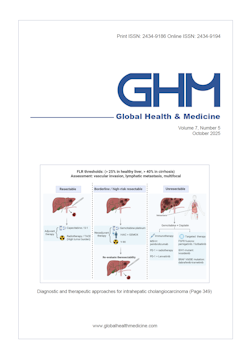Global Health & Medicine 2020;2(1):48-52.
The cooperation between professional societies contributes to the capacity building and system development for prevention and control of cancer in low- and middle-income countries: the practice of Cervical Cancer Prevention and Control Project in Cambodia
Kanal K, Fujita N, Soeung SC, Sim KL, Matsumoto Y, Haruyama R, Banno K, Kimura T
Globally, an estimated 570,000 women are newly diagnosed with cervical cancer, and 311,000 women die every year, with approximately 90% of the cases occurring in low- and middle-income countries (LMICs). Cervical cancer is the most common cancer in women in Cambodia, with age-standard incidence rate of 13.5/100,000 and mortality rate of 10.1/100,000. This paper introduces the educational and managerial interventions of Cambodia Cervical Cancer Project 2015-2018 by two professional societies of Cambodia and Japan. It can be categorized into three phases: health education and screening; diagnosis and treatment of precancerous lesions; and pathology service. Human papillomavirus test-based cancer screening and treatment of precancerous lesions were successfully initiated. Key factors contributed to optimal outcomes are partnership between two professional societies with strong commitment, and a comprehensive and stepwise quality-focused approach. A complementary role and joint society initiatives is a novel approach and substantial in sustainability for developing a system of cervical cancer management. This effort might serve as a good example how professional societies can contribute to capacity building and system development for prevention and control of cancer in LMICs.
DOI: 10.35772/ghm.2020.01000







